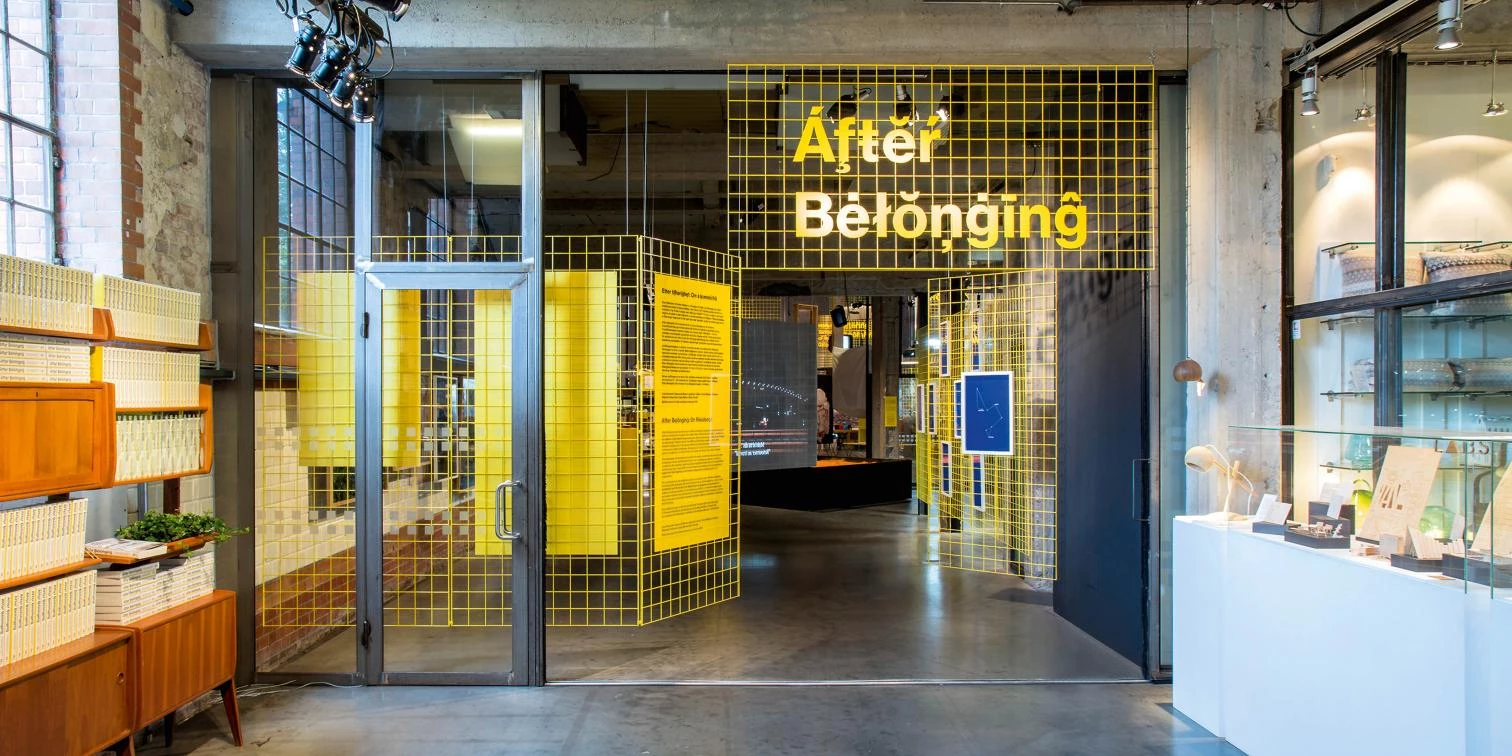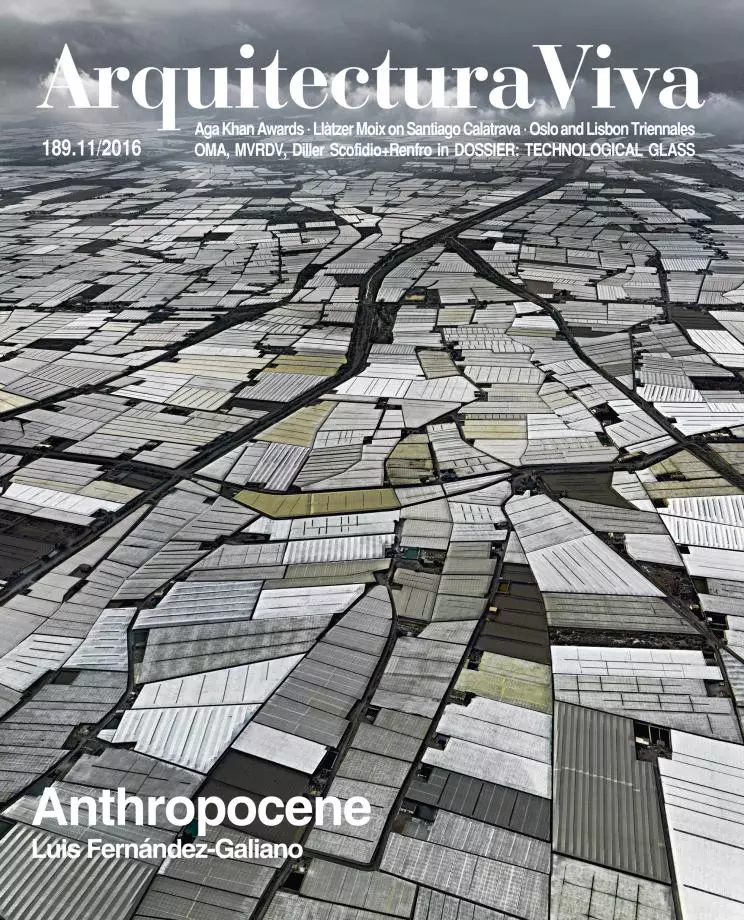‘After Belonging’, Oslo Architecture Triennale
No Homeland, No Flag

The title of the Oslo Architecture Triennale, ‘After Belonging,’ is not easy to interpret. Understandable as both a ‘pursuit to belong’ and a ‘postbelonging,’ the word play exposes a semantic conflict that transcends language to present a social, economic, and thus also architectural crisis. The ambivalence of ‘belonging,’ its simultaneous reference to being part of a place and being property of a person, is the structural theme of the fifth cycle of a triennale that “examines both our attachment to places and collectivities – Where do we belong? – as well as our relation to the objects we own, share, and exchange – How do we manage our belongings?”
Globalization has redrawn the physical and virtual borders that governed social and political behavior in the 20th century, unleashing a process of transformation that requires reflection on how to face the new human and digital challenges. Today’s massive movements of people, be they voluntary (tourism, work) or not (wars, political conflicts, scarcity of resources, lack of opportunities…) make it necessary to think of the new identity of the places being abandoned and the places being arrived at, and also the places in between, the interstitial zones. This theme of great currency and complexity is not far from the concerns of the exhibition’s curators, five Spanish architects who, as expats coinciding at Columbia University in New York, brought their resumés together for submission to the OAT (Oslo Arkiteturtriennale) in 2014. All under 40, Lluís Alexandre Casanovas, Ignacio González Galán, Carlos Mínguez Carrasco, Alejandra Navarrete Llopis, and Marina Otero Vezier structure the research along three major axes in dialogue with each other: one in theory form, presented in the catalog and in numerous encounters and debates that will be taking place over the months that the triennale is open (from September to November 2016), and two exhibitions, ‘In Residence’ and ‘On Residence,’ organized in two venues and with approaches that are as different as they are complementary.
‘In Residence’
In downtown Oslo, the Norwegian architect Sverre Fehn’s glass pavilion in the Norwegian Centre for Design and Architecture (DogA) hosts ‘In Residence,’ which is perhaps the most consolidated part of the research undertaken. Through ten sites the curators try to “challenge ideas of ‘site’ solely concerned with geometric boundaries and contextual references. Sites are instead considered as unstable nodes submitted to ongoing alterations and redefinitions.”
Gardemoen Airport in Oslo and the city of Kirkenes, northeastern border between Norway and Russia, are studied as interstitial spaces, legal borders, or geographical limits where origin enters a parallel plane. Mass migration and the refugee crisis are represented with the asylum in Torshov, also in Oslo. An example of the impact of tourism is seen in the Dubai Healthcare City, where luxurious facilities welcome thousands of visitors while the city’s real inhabitants are forced to journey distances to receive quality medical service that they can afford. For its part, the old workers’ district of Tensta, in Stockholm, is now home to a mostly Arab population that has transformed the originally homogeneous fabric into a “new global domestic landscape.” In contrast, the storage sheds in downtown New York illustrate a new typology, one associated with an unprecedented way of inhabiting where inhabitants are stripped of most of their belongings, in response to an uncontrolled rise in prices per square meter.
The ambitious selection continues with two technological examples: the religious communities in Lagos and the rental apartments in Copenhagen. In the first case, the arrival of broadband has been used as a tool for dissemination and communication, giving rise to new architectures which transform the physical and virtual landscape. In the second, the proliferation of apartments for rent through digital platforms has unleashed a tourism phenomenon where visitors are no longer content with a hotel room, but want the experience of being a resident. Finally, two communities stand out which have developed commercial stuctures important enough to alter a region’s economic, social, or architectural evolution: Risaralda in Colombia, a coffee-growing community whose economy depends on remittances from its migrant workers, and Prato, near Florence, one of Europe’s largest Chinatowns, with 50,000 inhabitants.
This research is accompanied by ten reports, each on one of the sites signed by international multidisciplinary teams, among them the Spanish group Husos. Completing ‘In Residence’ is an exhibition of the designs that won a competition for intervening on the five Nordic sites through spatial strategies, typological variations, material prototypes, digital platforms, or legal propositions. A participant was the Madrid firm Bollería Industrial, which proposed artifacts criticizing the absurd security measures of airports. The ten reports and five strategies for intervention make up ten exhibition packages that, though of unquestionable aesthetic value, can hardly compete with the depth of the research they accompany.
‘On Residence’
Not far from the museum, the DogA unleashes a torrent of objects constituting part two of the triennale: ‘On Residence.’ Furniture, screens, models, and panels hanging from trusses make a spectacular scenography explaining the 33 projects selected, each represented by an installation made for the triennale, and sometimes hard to understand because of a lack of connection with the content or because the descriptive texts are confusing.
Arranged under five headings setting parallelisms with ‘In Residence,’ the projects waver between theoretical, imaginative, propositive, and, sometimes, built. The Italian team Folder welcomes the visitor with a wall of globes simulating the number of geospatial data that government and private companies register. Also in a video, Pornified Homes by Andrés Jaque uses a provocative discourse to compare the Victoria amazonica (a Brazilian water lily) to Brazilian male escorts. If mid-19th-century London was transformed by greenhouses (Paxton popularized them after building the ‘hothouse lily’ in Chatsworth as a shelter for the Victoria amazonica), Jaque wonders if Brazilian escorts can unchain a similar effect in the buildings they live in, since both constructions are “capsules of tropical habitat for sexy exotic species.”
The triennale highlights architects’ analytical capacity, but falls short in stressing the importance of leaving the theoretical plane to act directly on reality. In both exhibitions, only the Dutch firm ROTOR – which retrieves, catalogs, and reuses the interiors of a bank – and the Spanish Enorme Studio/PKMN – whose Home Back Home project adapts the rooms of young people returning to their parents’ home because of the crisis – address the triennale theme from the construction angle. The other Spanish works are Welcome Hotel by SIC/VIC, Split Waters: Forty Installations for Disputed Islands by Luis Callejas and Charlotte Hansson, and An Old World in a Former New World by Cooking Sections.
‘After Belonging’ is provocative and stimulating. A sometimes excessive complexity characterizes an exhibition that is otherwise coherent in the continuity of its approach and able to draw us into a torrent of ideas inviting reflection, participation, and especially action. The triennale and the fundamental catalog that accompanies it together open an interesting and necessary debate that ought to answer the many questions raised in the course of the search for belonging, before society and the city are altogether stripped of geographical, cultural, or digital identity.





